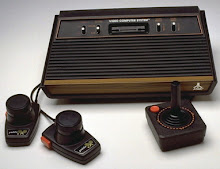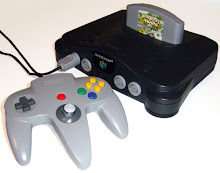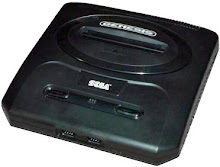
Alan Wake is a new psychological thriller from Remedy, the people who made Max Payne. The game follows the story of fiction writer Alan Wake who goes on vacation to Bright Falls with his wife Alice in the hopes of finding some peace and quiet. He finds everything but that after Alice is abducted, he loses a week of memory, and he is hunted by a dark presence.
The story is a big part of Alan Wake, as you move on through the game you realize that pieces of a manuscript called “Departure” are all over Bright Falls. This manuscript was supposedly written by Wake but he doesn’t remember it. To keep spoilers to a minimum I won’t go any further into the story itself but it is a bit of a mind bender at times and slightly confusing especially towards the climax and end.
The gameplay is classic over the shoulder third person but with a twist. The enemies you encounter are called the “taken” and they are villagers that the dark force has possessed. They are protected by a layer of darkness that makes them impervious to damage. In order to do damage to the taken you will have to peel off the darkness with your flashlight, flares, or flash bang grenades. Once the darkness is gone conventional weapons like pistols, shotguns, and hunting rifles will dispatch the enemies. You will need to put more batteries in the flashlight periodically since focusing the flashlight drains the batteries quickly, and focusing the light is the only quick way to deplete the darkness.
Poltergeists will also possess inanimate objects and hurl them at you so you need to constantly be running, dodging, and destroying possessed objects. There is also a tornado of the dark presence that chases you throughout the game. These chase scenes are always very intense and get your blood pumping.
The game is full of great action and fantastic cinematic experiences. There are several supporting characters like Barry, Wake’s publicist, and the sheriff who add to overall experience with witty dialogue and realistic portrayals of ordinary people in an extraordinary circumstance. Wake himself is an interesting character because he doesn’t start the game as the traditional “super soldier” of most action games. He is a writer who is forced to adapt to his situation to try and save his wife and keep himself alive.
The graphics are fantastic, both cut scenes and in-game sequences are truly impressive. The gameplay mechanic is pretty smooth but dodging attacks can get a little weird at times, the run button and the dodge button are the same so Alan will kind of do whatever he wants to.
The content is episodic with six episodes to the game; a seventh and eighth are planned and the seventh will be free with the code that came with the game. After each episode there is an intermission with a song and then a recap that starts with “previously on Alan Wake.” This makes it feel like you are watching a TV series and it is done very well.
Overall Alan Wake is a fantastic new IP that I hope to see a lot more of. The creative story, well written characters, and awesome graphics serve to add to a solid core of great action gaming.
Pros
-Awesome graphics
-Creative story
-Fun gameplay
Cons
-Running and dodging can get a little mixed up
-The games difficulty can spike a bit at times
10/10







